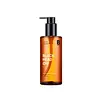What's inside
What's inside
 Key Ingredients
Key Ingredients

 Benefits
Benefits

 Concerns
Concerns

 Ingredients Side-by-side
Ingredients Side-by-side

Paraffinum Liquidum
EmollientEthylhexyl Stearate
EmollientCaprylic/Capric Triglyceride
MaskingIsohexadecane
EmollientPEG-20 Glyceryl Triisostearate
EmollientIsopropyl Myristate
EmollientLavandula Angustifolia Oil
MaskingCamellia Oleifera Seed Oil
Skin ConditioningCocos Nucifera Oil
MaskingTocopheryl Acetate
AntioxidantDicaprylyl Ether
EmollientDicaprylyl Carbonate
EmollientGardenia Taitensis Flower
Skin ConditioningTocopherol
AntioxidantPhenoxyethanol
PreservativeParaffinum Liquidum, Ethylhexyl Stearate, Caprylic/Capric Triglyceride, Isohexadecane, PEG-20 Glyceryl Triisostearate, Isopropyl Myristate, Lavandula Angustifolia Oil, Camellia Oleifera Seed Oil, Cocos Nucifera Oil, Tocopheryl Acetate, Dicaprylyl Ether, Dicaprylyl Carbonate, Gardenia Taitensis Flower, Tocopherol, Phenoxyethanol
Glycine Soja Oil
EmollientTriethylhexanoin
MaskingEthylhexyl Palmitate
EmollientPEG-20 Glyceryl Triisostearate
EmollientIsopropyl Myristate
EmollientIsohexadecane
EmollientEthylhexyl Stearate
EmollientPolyisobutene
Dicaprylyl Ether
EmollientIsononyl Isononanoate
EmollientCaprylic/Capric Triglyceride
Masking1,2-Hexanediol
Skin ConditioningCitrus Limon Peel Oil
MaskingCitrus Aurantium Dulcis Oil
MaskingCitrus Limon Fruit Oil
AstringentCymbopogon Schoenanthus Oil
MaskingGeranium Maculatum Oil
MaskingPentaerythrityl Tetra-Di-T-Butyl Hydroxyhydrocinnamate
AntioxidantCymbopogon Nardus Oil
MaskingCitrus Reticulata Leaf Oil
MaskingPrunus Armeniaca Kernel Oil
MaskingVetiveria Zizanoides Root Oil
MaskingMelaleuca Alternifolia Leaf Oil
AntioxidantMoringa Oleifera Seed Oil
EmollientWater
Skin ConditioningButylene Glycol
HumectantCentella Asiatica Extract
CleansingHouttuynia Cordata Extract
Skin ConditioningPentylene Glycol
Skin ConditioningEthylhexylglycerin
Skin ConditioningTocopherol
AntioxidantLimonene
PerfumingCitral
PerfumingGlycine Soja Oil, Triethylhexanoin, Ethylhexyl Palmitate, PEG-20 Glyceryl Triisostearate, Isopropyl Myristate, Isohexadecane, Ethylhexyl Stearate, Polyisobutene, Dicaprylyl Ether, Isononyl Isononanoate, Caprylic/Capric Triglyceride, 1,2-Hexanediol, Citrus Limon Peel Oil, Citrus Aurantium Dulcis Oil, Citrus Limon Fruit Oil, Cymbopogon Schoenanthus Oil, Geranium Maculatum Oil, Pentaerythrityl Tetra-Di-T-Butyl Hydroxyhydrocinnamate, Cymbopogon Nardus Oil, Citrus Reticulata Leaf Oil, Prunus Armeniaca Kernel Oil, Vetiveria Zizanoides Root Oil, Melaleuca Alternifolia Leaf Oil, Moringa Oleifera Seed Oil, Water, Butylene Glycol, Centella Asiatica Extract, Houttuynia Cordata Extract, Pentylene Glycol, Ethylhexylglycerin, Tocopherol, Limonene, Citral
 Reviews
Reviews

Ingredients Explained
These ingredients are found in both products.
Ingredients higher up in an ingredient list are typically present in a larger amount.
This ingredient is an emollient, solvent, and texture enhancer. It is considered a skin-softener by helping the skin prevent moisture loss.
It helps thicken a product's formula and makes it easier to spread by dissolving clumping compounds.
Caprylic Triglyceride is made by combining glycerin with coconut oil, forming a clear liquid.
While there is an assumption Caprylic Triglyceride can clog pores due to it being derived from coconut oil, there is no research supporting this.
Learn more about Caprylic/Capric TriglycerideDicaprylyl Ether is created from caprylic acid. It is a texture-enhancer and emollient.
As an emollient, Dicaprylyl Ether is non-comedogenic. It helps soften and smooth the skin by creating a barrier on top. This barrier helps trap moisture in, helping to hydrate the skin.
Dicaprylyl Ether gives a non-greasy feel and better spreadability to products.
Learn more about Dicaprylyl EtherEthylhexyl Stearate is an ester of 2-ethylhexyl alcohol and stearic acid. It is an emulsifier, emollient, and texture enhancer.
As an emulsifier, it helps prevent ingredients from separating.
Its emollient property helps soften and hydrate the skin. Emollients form a barrier on the skin to trap moisture in.
Learn more about Ethylhexyl StearateIsohexadecane is added to enhance texture, emulsify, and to help cleanse. It is an isoparrafin. It is a component of petrolatum.
Due to its large size, Isohexadecane is not absorbed by the skin. Instead, it sits on top and acts as an emollient. Emollients help keep your skin soft and smooth by trapping moisture within.
Isohexadecane is often used in products designed to help oily skin. It is lightweight and non-greasy while helping to moisturize. When mixed with silicones, it gives a product a silky feel.
Learn more about IsohexadecaneIsopropyl Myristate is an emollient, thickening agent, and texture enhancer. It is created from isopropyl alcohol and myristic acid.
It is used to help other ingredients be better absorbed. It is also an emollient and may help soften and hydrate the skin.
The comedogenic rating of this ingredient depends on the concentration. Lower amounts results in a lower rating.
Isopropyl Myristate may not be fungal acne safe. It can potentially worsen acne prone skin.
Learn more about Isopropyl MyristatePeg-20 Glyceryl Triisostearate comes from Isostearic Acid and glycerin.
It is an emollient, emulsifier, and gentle cleanser. As an emollient, it helps trap moisture to keep skin soft and hydrated. Emulsifiers help prevent ingredients from separating.
This ingredient is common in oil-based products. This is because it helps oil-ingredients be easily washed away without leaving a residue.
Peg-20 Glyceryl Triisostearate may not be fungal-acne safe.
Learn more about PEG-20 Glyceryl TriisostearateTocopherol (also known as Vitamin E) is a common antioxidant used to help protect the skin from free-radicals and strengthen the skin barrier. It's also fat soluble - this means our skin is great at absorbing it.
Vitamin E also helps keep your natural skin lipids healthy. Your lipid skin barrier naturally consists of lipids, ceramides, and fatty acids. Vitamin E offers extra protection for your skin’s lipid barrier, keeping your skin healthy and nourished.
Another benefit is a bit of UV protection. Vitamin E helps reduce the damage caused by UVB rays. (It should not replace your sunscreen). Combining it with Vitamin C can decrease sunburned cells and hyperpigmentation after UV exposure.
You might have noticed Vitamin E + C often paired together. This is because it is great at stabilizing Vitamin C. Using the two together helps increase the effectiveness of both ingredients.
There are often claims that Vitamin E can reduce/prevent scarring, but these claims haven't been confirmed by scientific research.
Learn more about Tocopherol